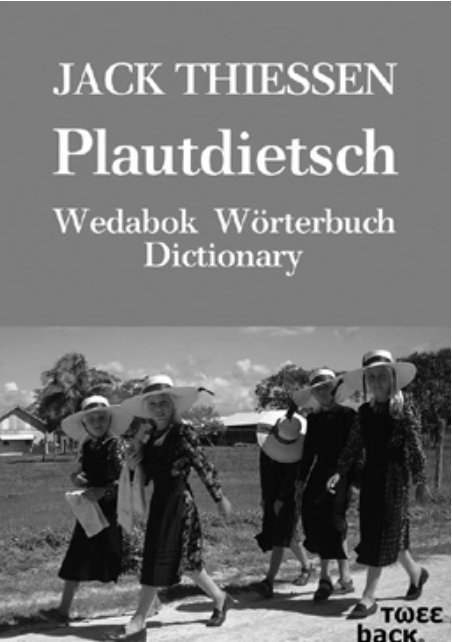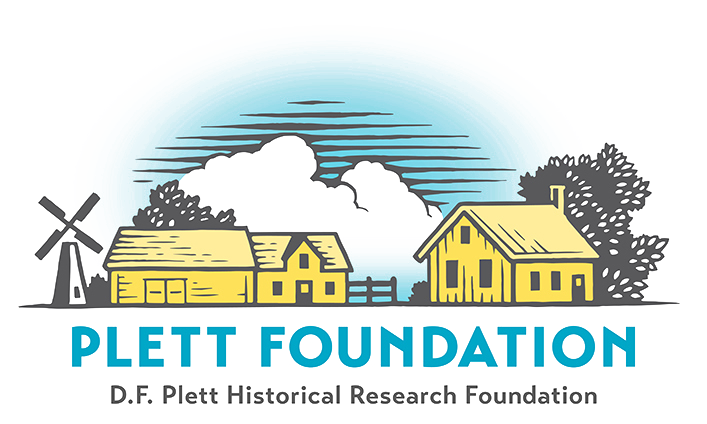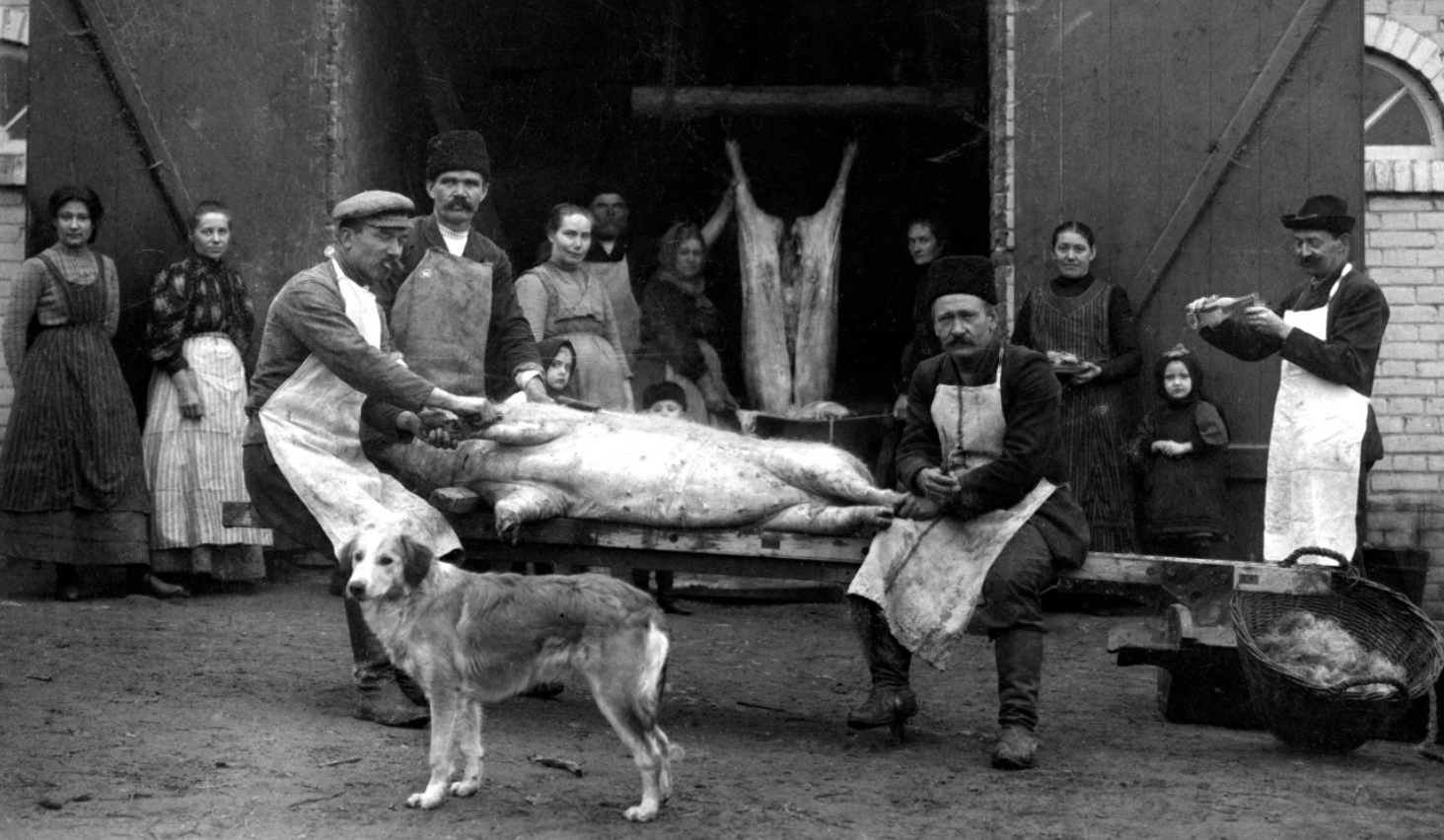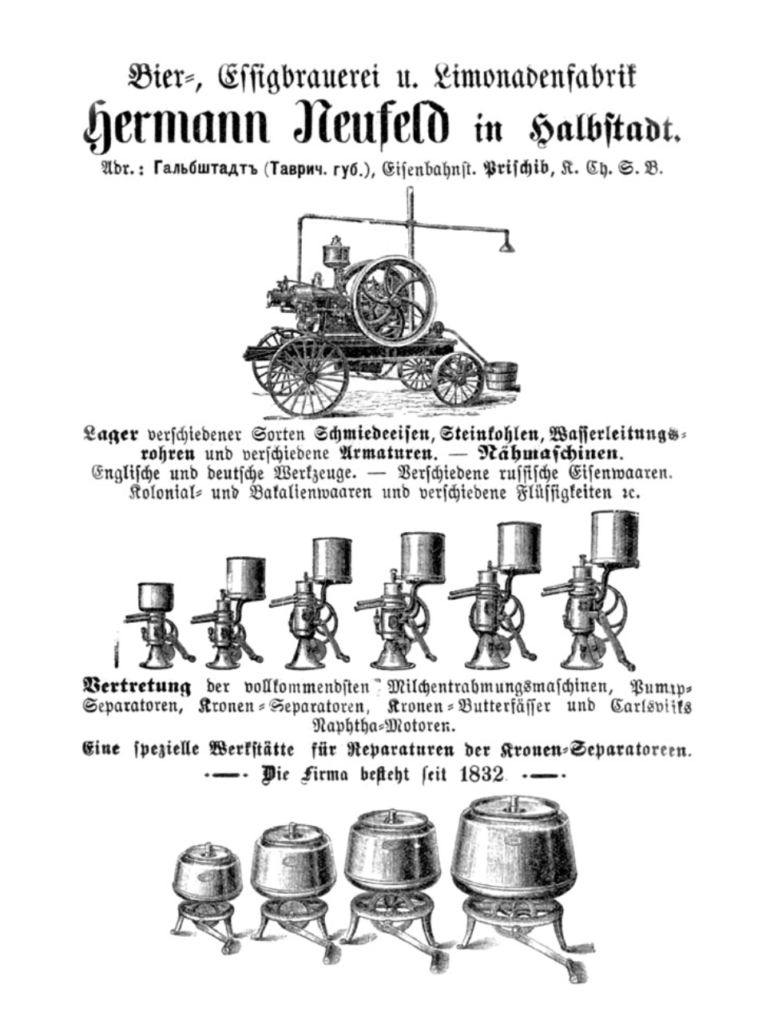Alcohol & Abstinence: Mennonites in South Russia
The Mennonites brought a long tradition of alcohol production to Russia. Over several generations in Prussia, they distilled brandy and also produced wine. In 1660, for example, there were thirty-six distillers of brandy in the city of Danzig, who seemed to be more successful in their business than their competitors, despite tax disadvantages.1 Brandy distilling was almost exclusively a Mennonite trade; a Catholic brandy distiller, for example, was considered a “Catholic Mennist.”2
Despite great poverty in the colonies of Chortitza and Molotschna, distilleries and breweries were among the first businesses established in the colonies. Privileges from the state made this rapid development possible, as well as direct financial support from the Guardianship Committee for Foreign Settlers.3 The date of construction of the first distillery in the colony of Molotschna, founded in 1804, is not clear; however, a distillery existed by 1810.4 By 1806 there was a brewery in Fuerstenau.5 In Halbstadt, a brewery was established in 1809 and in 1832, the Neufeld family’s Beer, Vinegar and Lemonade Factory, opened.6
Beer, wine, and brandy could be purchased in local taverns. Many of the villages probably had taverns, although their existence can be hard to confirm. In the Chortitza colony, the settlers who had just arrived from Prussia likely built a tavern in Kronsweide in the 1790s.7 Possibly this was the same tavern later operated by Abraham Neustaedter from Old Kronsweide.8 In the Molotschna colony we know a tavern existed in Rueckenau, as Philipp Isaak (1832–1878) acquired the property and converted it into a meeting house for the Mennonite Brethren congregation.9 Tiegerweide and Lichtenau each had a tavern by 1885,10 and Gnadenfeld had one by 1886.11
Alcohol Consumption
In literature written and read by Mennonites, their economic success, and that of other German colonists, was often attributed to their comparatively restrained consumption of alcohol. For example, the Odessaer Zeitung reproduced a letter by a Russian who had lived in the German colonies or near them for twenty-five years. According to him, German colonists drank less schnapps and farmed better than their Russian neighbours. He claimed that Russians would prefer to drink magarytsch, a wine, instead of working.12 The difference between the groups could be seen in their social events. Whereas a German wedding lasted only one day, a Russian wedding lasted ten days, during which more than three hundred litres of schnapps and a lot of wine was consumed. This excessive drinking resulted in fights, sometimes with a fatal outcome. According to the author, German colonists did not celebrate “schnapps ceremonies” – baptisms and funerals took place without alcohol. He also claimed that although every German village had a tavern, drunk people were not seen, and the income of the German taverns would be much lower compared to the income of their Russian counterparts.13
Die Mennonitische Rundschau claimed that the “national vice of the Russians is binge drinking.” It argued that a change in the situation was unrealistic as long as the liquor tax existed.14 An anonymous author in the newspaper Die Friedensstimme viewed the Mennonite colonies as an “island of sobriety” in the midst of an “ocean of brandy.” However, the author worried that the consumption of alcohol by young people endangered the entire social and economic life on this “island.”15 At least in public, and in comparison with neighbouring Russian villages, Mennonites appeared to drink less excessively. Nonetheless, some Mennonites regularly got drunk outside the colony as they attended fairs and festivals in neighbouring towns, such as Aleksandrovsk, east of the Chortitza colony.16
In his diary, the minister David Epp (1781–1843) recorded a significant number of people who drank alcohol excessively and were reprimanded by him or by other church elders.17 Looking back over the year of 1838, he wrote: “The profligacy of youth intensifies as does the drinking – no, guzzling – of liquor and the dancing at weddings. Love has grown cold in many. Few measures have been taken to curb these excesses and many are ignoring them.”18 At the end of 1841 he noted: “Immorality seems to have the upper hand. Adultery, unethical behaviour, dances at weddings, and annual fairs – all this seems to be the order of the day.”19

to promote abstinence.
The exposure of Mennonites to Russian drinking culture deepened with the Crimean War (1853–1856). The first Russian soldiers passed through the colonies in 1854. Mennonites quartered troops, supplying them with food and brandy, and caring for their wounded.20 During this time, young men were often on the road for weeks transporting soldiers. They were certainly influenced by the Russian soldiers’ sense of morality and their enormous alcohol consumption.21 To make matters worse, a cholera epidemic ravaged southeastern Europe during this period and typhus was rampant in the war zones.22 The soldiers believed daily consumption of brandy would protect them from infection.23
Starting in the middle of the nineteenth century, strong criticism of alcohol consumption could be heard within Mennonite communities. Deposed Ohrloff elder Heinrich Wiens (1800–1872) strongly rebuked drunkenness in 1847.24 Bernhard Harder (1882–1884), a minister from the Mennonite congregation of Ohrloff-Halbstadt, also admitted that when old sermons were read aloud, in order not to offend, terms like “to swill” (saufen) were replaced by the word “to drink” (trinken). He firmly condemned what he perceived as widespread drunkenness among Mennonites.25 In his diary, lay minister Jacob Epp recorded on numerous occasions witnessing people drinking excessively.26 For example, he noted after a wedding celebration in 1865, “As we left we could hear drinking songs echoing through the house where the Lord’s name had been spoken in song and prayer only yesterday. How can this be acceptable to Christ? We are guilty of such hypocrisy.”27
Representatives of the Mennonite Brethren Church, established in 1860, also criticized the community. They did not denounce alcohol consumption per se, but rather objected to the lax way in which the Mennonite clergy dealt with its abuse. Jacob Bekker (1826–1908), one of the founders of the Mennonite Brethren movement, viewed the presence of a distillery and numerous taverns as a sign of spiritual decline among Mennonites. Especially at the annual pig slaughtering ceremony, copious amounts of schnapps were consumed. Alcohol was also consumed at weddings after the preacher had left. Taverns in neighbouring Russian villages were also frequented by young men and women who were members of the church, and the clergy feigned ignorance. According to Bekker, “sensuality” prevailed throughout the Mennonite colonies during the first half of the nineteenth century.28
Even as Mennonite society became more sensitive to the issue of alcohol, there were repeated tragic incidents. For example, in Tiegerweide some Mennonites physically attacked a group of Russians after a tavern visit. In Lichtenau, a brawl broke out after young people from Altonau visited a tavern.29 In 1906 in Elisabethal, Karl Siebert killed a man named Gerh. Thiessen and seriously injured his son, after drinking wine.30
Abstinence Efforts
The idea of abstinence from alcohol did not gain currency in the Mennonite world of southern Russia, even though there were repeated calls for moderation. The Kleine Gemeinde movement, founded by Klaas Reimer in 1812, rejected all brandy drinking.31 In a strict sense, however, this was merely moderation, not complete abstinence.
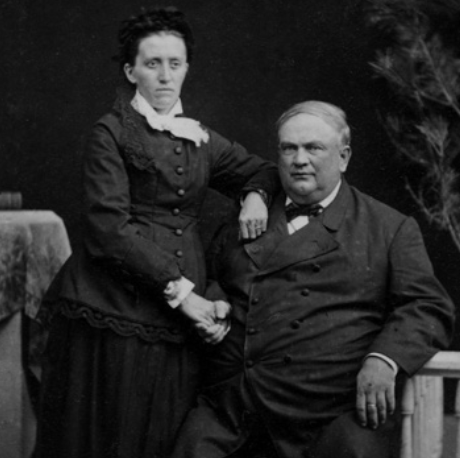
The issue of alcohol abuse in the Mennonite colonies can also be seen as a factor in the formation of the Mennonite Brethren Church. The 1860 letter of resignation by the founding members of the church criticized the religiosity of members of the kirchliche congregation, including their alcohol consumption. For the Mennonite Brethren, it was reprehensible that habitual drinkers participated in the Lord’s Supper and that people drank at occasional celebrations. They were particularly critical that spiritual leaders of the congregation were present on such occasions.32 Franz Isaak (1816–1899), a minister of the Ohrloff-Petershagen congregation, wrote in his diary that the spiritual condition of the Mennonites was “even worse than the brothers who had left describe it,” because some were proud to be a “hero in drinking.”33 Members of the Mennonite Brethren congregation stretched their definition of drunkards to include not just people who regularly drank to excess, “but also those who get drunk and eat their fill now and then or at fairs and drinking parties.”34 The Mennonite Brethren required its members to abstain from drinking alcohol and smoking tobacco. A. H. Unruh, in his history of the Mennonite Brethren, viewed this requirement as following the resolutions of the Mennonite congregations in West Friesland in 1639, which forbade the visiting of taverns and drinking “spirituous beverages” and smoking tobacco.35 By 1910, however, some congregations no longer strictly adhered to this principle.36
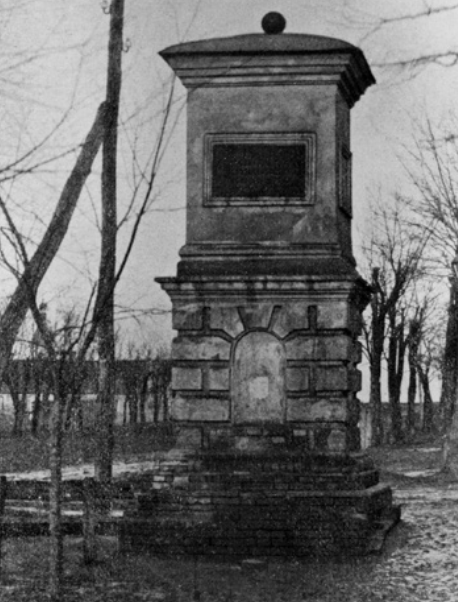
The idea of abstinence reached the colonies mainly through the influence of foreign missionaries and preachers. Although the Mennonites lived in relative isolation, they had contact with people of various evangelical persuasions throughout the nineteenth century. The South German Pietists as well as Methodists, Presbyterians, and Quakers, for example, established personal contacts in the Mennonite colonies through their cooperation in the Russian Bible Society and their visits to the colonies.37
In 1819, not long after the founding of the colonies of Chortitza and Molotschna, Quakers Stephen Grellet (1773–1855) and William Allen (1770–1843) visited the Mennonites; they would maintain intensive contact for many years.38 Allen included a section on drunkenness in his book of scripture lessons for schools operating under the Lancasterian model in Russia.39
John Melville (1802–1886) was a Scotsman who lived in southern Russia from 1837, distributing Bibles and tracts for the British and Foreign Bible Society. He was a strict Presbyterian and a strong advocate of the temperance movement. He was able to convince some Mennonite clergy of his position.40 Ernst Ferdinand Stroeter, a German Methodist, professor of theology, and advocate of abstinence, also visited and lectured to Mennonites on several occasions.41 His writings were read among Mennonites.42 Jakob Vetter, a preacher from Germany, visited the Molotschna and Chortitza colonies from December 1906 and into the new year.43 He categorically rejected alcohol after attending a “church feast” celebrating “the sin of drunkenness.”44
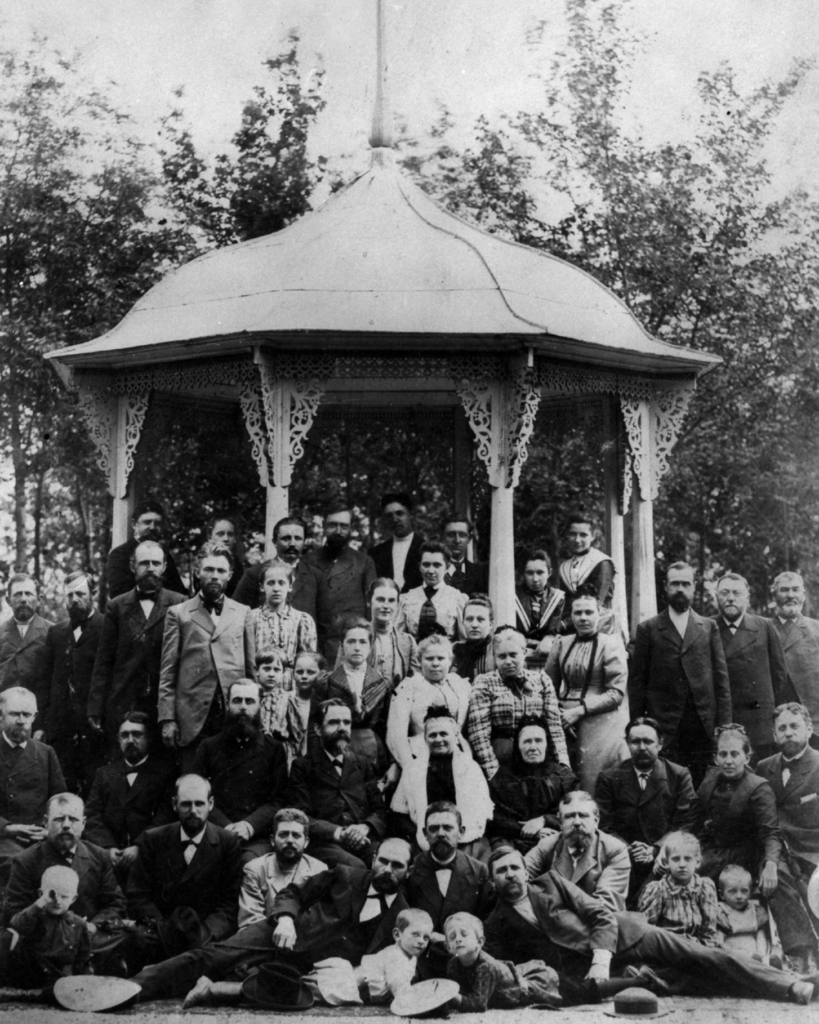
Ernst Gebhardt (1832–1899), a Methodist preacher and songwriter, was editor of the journal Der Mäßigkeitsfreund (The temperance friend), and also had contact with Mennonites.45 Johann Gerhard Oncken (1800–1884), the founder of the continental European Baptist movement and of the first temperance society in Germany, visited Mennonites and also influenced them through his writings.46
The South German pietist Eduard Wuest (1818–1859) likely had the greatest influence on advancing the idea of abstinence among Mennonites.47 While still studying theology in Tübingen he was thrown into jail for drunkenness, making noise in the streets, and disobeying the police.48 In Murrhardt and Rietenau, Wuest became acquainted with the Pietist movement and began to lead an increasingly conservative lifestyle.49 By the time he visited the Russian empire, Wuest had stopped drinking brandy. He spoke at the annual meeting of the Gnadenfeld Temperance Union.50
Wuest’s interactions with Mennonites helped to stimulate discussion about alcohol consumption. Before Wuest, some Mennonites claimed that morality was at such a low level that festivities such as “pig slaughters, year-end accounts in the village office, weddings, and similar occasions” were often used as excuses for “drinking bouts.”51 Under his guidance, the customs and traditions changed in many villages; at weddings only one glass of wine at most was passed around.52
It was not only the rather short-lived stays of foreign preachers and missionaries that influenced Mennonites. Developments in the village of Gnadenfeld played a decisive role. Gnadenfeld was created by Mennonites from Brenkenhofswalde (Neumark) who settled in the Russian empire as a whole village in 1835. This non-traditional Mennonite community was more open than others to innovations such as freely preached sermons, Sunday school, missions targeting Gentiles and Jews, and annual missionary festivals. Elder Friedrich W. Lange (1800–1864) founded an abstinence society in the 1840s, “which had well-attended monthly meetings, and through its activities persuaded many a notorious drunkard to turn from his vicious ways.”53 Gnadenfeld was also the first Mennonite village to ban taverns and to seek ways to reduce alcohol consumption by distributing anti-alcohol tracts and collecting signatures of teetotallers, while clergy visited individuals and tried to win them over to the temperance movement.54 These types of innovations led to criticism in the surrounding Mennonite villages, including by the clergy.55
Abraham Kroeker (1863–1944), a Mennonite Brethren minister and the editor of the newspaper Die Friedensstimme, also performed a central role in promoting abstinence. For Kroeker, the alcohol problem was not as widespread among Mennonites as it was among Russians, but it was on the rise. Kroeker criticized what he perceived as indifference and inaction among Mennonites regarding alcohol addiction. He viewed the preaching of the gospel as the most effective tool, through which other temperance organizations, like the Blue Cross and the Salvation Army, had already achieved some success. The closing of taverns would also be effective, which the villages could legally do. Kroeker felt the youth could be saved if they were protected from the “opportunity to drink.”56
Die Friedensstimme published countless articles to encourage abstinence and to warn against alcohol consumption. In these articles, the moral, medical, and economic advantages of abstinence were explained. For instance, it was stated that drinking would lead to an increased risk of cancer or cause health problems in offspring.57 As a deterrent, the newspaper reported on the accidents caused by drinking, such as drowning after excessive consumption.58 In 1912, it was noted that at a public festival near Halbstadt, which was organized on the occasion of the visit of an airplane, no alcoholic beverages were offered.59 Kroeker was pleased that the First World War had caused the sale of brandy to be prohibited. He believed that people would realize that a life without alcohol was better and abstinence would have “beneficial effects in all conceivable areas.”60
By the latter part of the nineteenth century, the worldwide abstinence movement had reached Mennonites in South Russia. At the beginning of the twentieth century, there were efforts to abolish taverns in the colonies. In 1910, some villages in the Molotschna colony sent a request to the governor to ban private liquor outlets in their villages, which was approved and carried out.61 In 1907, according to the Mennonitisches Jahrbuch, taverns and “brandy sales points” no longer existed in Mennonite villages.62 This statement, however, was contradicted by the continued presence the next year of a wine cellar, a beer hall, and a tavern in Neu-Halbstadt.63 In the village of Chortitza, one could still buy alcoholic beverages at a local inn in 1910, and a beer store still existed in Neu-Halbstadt in 1914.64
- Horst Penner, Die ost- und westpreussischen Mennoniten in ihrem religiösen und sozialen Leben, in ihren kulturellen und wirtschaftlichen Leistungen, vol. 1, 1526 bis 1772 (Kirchheimbolanden: self-pub., 1978), 98–100, 377.
- Ibid., 101.
- Heinrich Heese, “Kurzgefaßte geschichtliche Übersicht der Gründung und des Bestehens der Kolonien des chortizer Mennonitenbezirkes,” Unterhaltungsblatt für Deutsche Ansiedler im Südlichen Russland (hereafter Unterhaltungsblatt), Sept. 1851, 66.
- Adina Reger and Delbert Plett, Diese Steine: Die Russlandmennoniten (Steinbach, MB: Crossway Publications, 2001), 227.
- Willi Vogt, “Liste der mennonitischen Industrie- und Handelsunternehmen in Russland,” Mennonitische Geschichte und Ahnenforschung Chortitza, updated Feb. 1, 2021, https://chort.square7.ch/Pis/Indust.pdf.
- “Bier-, Essigbrauerei und Limonadenfabrik Hermann Neufeld in Halbstadt,” Neuer Haus- und Landwirtschaftskalender für deutsche Ansiedler im südlichen Russland (1906), 196.
- Peter Hildebrand, Erste Auswanderung der Mennoniten aus dem Danziger Gebiet nach Südrussland (Halbstadt: P. Neufeld, 1888), 80.
- Kornelius Hildebrand, “Aus der Kronsweider Erweckungszeit,” Der Botschafter, Feb. 12, 1913, 2.
- A. H. Unruh, Die Geschichte der Mennoniten-Bruedergemeinde, 1860–1954 (Hillsboro, KS: General Conference of the Mennonite Brethren Church of North America), 167; Peter M. Friesen, The Mennonite Brotherhood in Russia (1789– 1910), 2nd rev. ed., trans. and ed. J. B. Toews, Abraham Friesen, Peter J. Klassen, and Harry Loewen (Fresno, CA: Board of Christian Literature, General Conference of Mennonite Brethren Churches, 1980), 493–94.
- “Etwas über die Vorzüge der Mennoniten,” Odessaer Zeitung (1885), no. 217, 1–2.
- “Die Gnadenfelder Gemeindechronik,” Mennonitsches Jahrbuch (1913), 40.
- “Unterschied russische Bauern und deutsche Kolonisten,” Odessaer Zeitung (1895), no. 29, 2.
- “Unterschied russische Bauern und deutsche Kolonisten,” Odessaer Zeitung (1895), no. 31, 2.
- “Das Nationallaster der Russen,” Mennonitische Rundschau, Sept. 24, 1884, 2.
- “Die Insel der Nüchternheit,” Friedensstimme, Jan. 12, 1908, 19–20.
- “Eine Stimme aus der russichen Presse über die Mennoniten,” Odessaer Zeitung (1883), no. 253, 2; Kornelius Hildebrand, “Aus der Kronsweider Erweckungszeit,” Der Botschafter, Feb. 19, 1913, 2.
- John B. Toews, trans. and ed., The Diaries of David Epp, 1837–1843 (Vancouver: Regent College Publishing, 2000). There are over thirty references to drinking and drunkenness.
- Ibid., 75.
- Ibid., 165–66.
- “Allerhöchstes Wohlwollen,” Unterhaltungsblatt, July 1855, 50.
- In 1855, for example, the Russian army in Crimea needed 7,488,000 litres of vodka for four months. Mara Kozelsky, Crimean in War and Transformation (New York: Oxford University Press, 2019), 108.
- Ibid., 42, 164.
- George K. Epp, Geschichte der Mennoniten in Russland, vol. 2, Die Gemeinschaft zwischen Fortschritt und Krise (Lage: Logos Verlag, 1998), 134.
- Unruh, Geschichte der Mennoniten-Bruedergemeinde, 33.
- Jacob Bekker, Origin of the Mennonite Brethren Church, trans. D. E. Pauls and A. E. Janzen (Hillsboro, KS: Mennonite Brethren Historical Society of the Midwest, 1973), 115; Unruh, Geschichte der Mennoniten-Bruedergemeinde, 56.
- Harvey Dyck, trans. and ed., A Mennonite in Russia: The Diaries of Jacob D. Epp (Toronto: University of Toronto Press, 1991). The index lists thirty entries on alcohol use and drunkenness.
- Ibid., 206.
- Bekker, Origin of the Mennonite Brethren, 18–21.
- “Etwas über die Vorzüge der Mennoniten,” Odessaer Zeitung (1885), no. 217, 1–2.
- “Aus deutschen Ansiedlungen,” Friedensstimme, Dec. 2, 1906, 540.
- Abraham Braun, “Kleine Chronik der Mennoniten an der Molotschna seit ihrer Ansiedlung bis in mein 80. Jahr,” Mennonitisches Jahrbuch (1907), 69.
- Bekker, Origin of the Mennonite Brethren, 43–47.
- John F. Harms, Geschichte der Mennoniten Brüdergemeinde, 1860–1924 (Hillsboro, KS: Mennonite Brethren Publishing House, 1924), 17
- Ibid., 8.
- Unruh, Geschichte der Mennoniten-Bruedergemeinde, 307.
- Wilhelm Göbel,” “Die Alkoholfrage,” Friedensstimme, Nov. 17, 1910, 4.
- James Urry, “‘Servants from Far’: Mennonites and the Pan-Evangelical Impulse in Early Nineteenth-Century Russia,” Mennonite Quarterly Review 61, no. 2 (1987): 214.
- Cornelius Jansen, “Memoiren des verstorbenen Isaak Robson, Huddersfield, England und Skizzen aus dem Wirken der Gessellschaft der ‘Freunde’,” Mennonitische Rundschau, Sept. 2, 1885, 1; “Zum Anenken,” Mennonitische Rundschau, Feb. 18, 1885, 2; Urry, “Servant From Far,” 215.
- William Allen, Scripture Lessons, for Schools on the British System of Mutual Instruction (London: British and Foreign School Society, 1820), 90–91.
- James Urry, “John Melville and the Mennonites: A British Evangelist in South Russia, 1837–ca. 1875,” Mennonite Quarterly Review 54, no. 4 (1980): 305–306, 315.
- “Aus deutschen Ansiedlungen,” Friedensstimme, June 6, 1909, 9.
- “Professor E. F. Stroeter: Schriften,” Friedensstimme, June 20, 1909, 12.
- “Zum Besuch des Evangelisten Vetter,” Friedensstimme, Dec. 30, 1906, 590.
- Hans Bruns, Jakob Vetter: Der Gründer der Zeltmission (Giessen: Brunnen-Verlag, 1954), 9–10.
- Biographisch-Bibliographisches Kirchenlexikon, vol. 26 (2006), s.v. “Gebhardt, Heinrich Ernst,” by Karl Heinz Voigt.
- Heinrich Tappe, Auf dem Weg zur modernen Alkoholkultur: Alkoholproduktion, Trinkverhalten und Temperenzbewegung in Deutschland vom frühen 19. Jahrhundert bis zum Ersten Weltkrieg (Stuttgart: Steiner, 1994), 141; James Urry, “The Closed and the Open: Social and Religious Change Amongst the Mennonites in Russia (1789–1889)” (PhD diss., Oxford University, 1978), 522–524, 563, 574–76.
- Urry, “John Melville and the Mennonites,” 315.
- Victor G. Doerksen, “A Second Menno? Eduard Wüst and Mennonite Brethren Beginnings,” Mennonite Quarterly Review 74, no. 2 (2000): 316.
- Abraham Kröker, Pfarrer Eduard Wüst der grosse Erweckungsprediger in den deutschen Kolonien Südrusslands (self-pub., 1903), 20.
- Ibid., 64.
- Ibid., 78.
- Ibid., 71.
- Heinrich Dirks, “Peter Neufeld: Ein kurzer Lebensabriss,” Mennonitisches Jahrbuch (1910), 85–86.
- Bekker, Origins of the Mennonite Brethren, 21–22, 32.
- Heinrich Dirks, “Peter Neufeld: Ein kurzer Lebensabriss,” Mennonitisches Jahrbuch (1910), 85–86.
- “Zum Kampf mit der Trunksuch,” Friedennstimme, July 2, 1914, 7.
- “Eine kleine Rechnung,” Friedensstimme, Aug. 20, 1911, 7–8; J. W. Penner, “Von der Jugend, vom Alkohol und vom Wege zum Heldentum,” pt. 1, Am Feierabend (youth supplement to Die Friedensstimme), Feb. 15, 1914, 2–3; Penner, “Von der Jugend . . .,” pt. 2, Friedensstimme, Feb. 22, 1914, 9–10.
- Jakob Hübert, “Verschiedenes,” Friedensstimme, June 26, 1910, 10.
- “Das Flugfest bei Halbstadt,” Friedensstimme, Sept. 12, 1912, 7.
- Abraham Kröker, “Zur gegenwärtigen Lage,” Friedensstimme, Aug. 28, 1914, 4.
- “Editorielles,” Mennonitsche Rundschau, Mar. 23, 1910, 8.
- Heinrich Dirks, “Die Geschichte des Mennonitenvölkleins in Rußland während des Jahres 1907,” Mennonitische Jahrbuch (1907), 11.
- Vogt, “Liste der mennonitischen Industrie”; “Schließung von Getränkehandlungen,” Friedensstimme, Sept. 6, 1908, 570.
- Daniel Janzen, “Daniel Janzen,” Friedensstimme, June 19, 1910, 9; Vogt, “Liste der mennonitischen Industrie.”
Also In this Issue
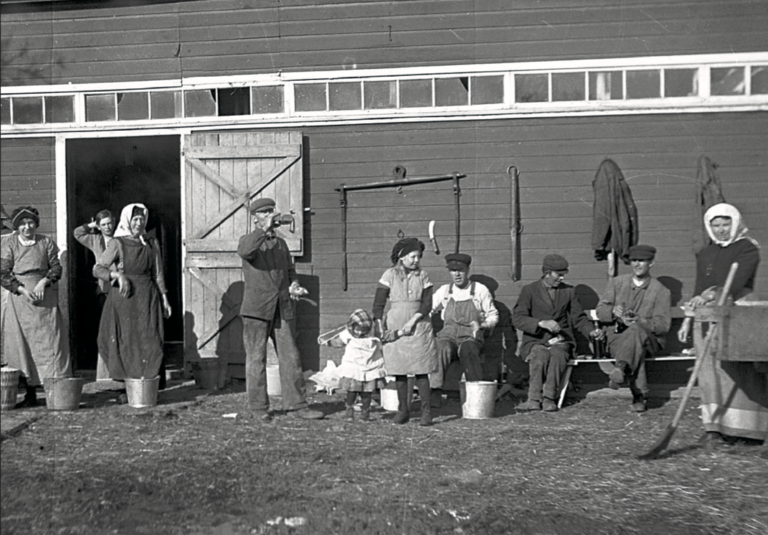
Proof in Material Culture: Mennonite Alcohol Consumption
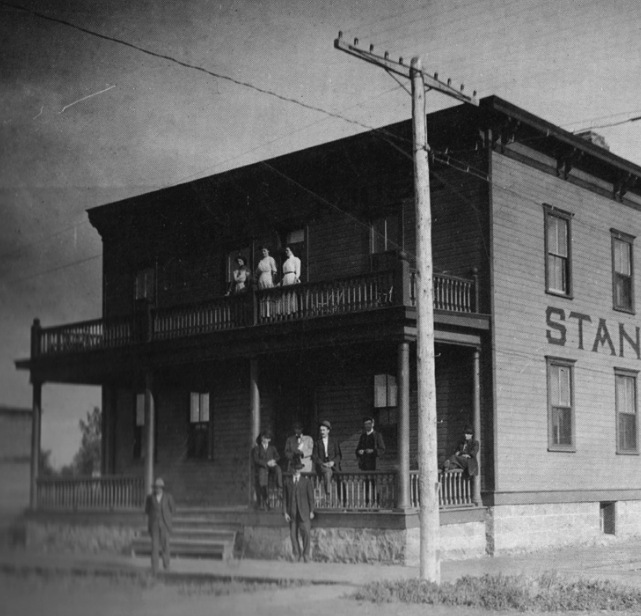
Liquor Licenses: Winkler of the 1890s

Objections to Alcohol: The Rise and Fall of Temperance in Winkler
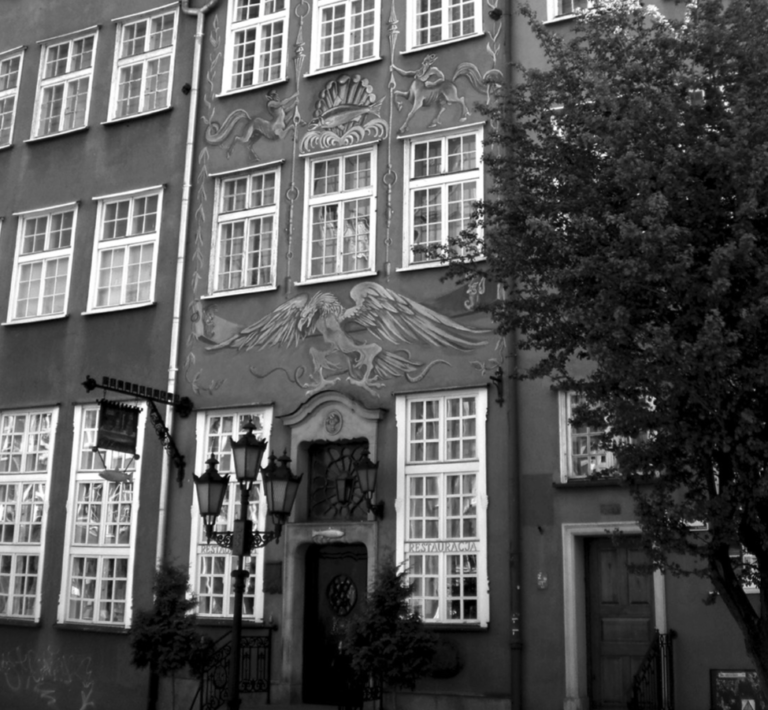
Mennonite Nectar: Alcohol Production in the Vistula Delta
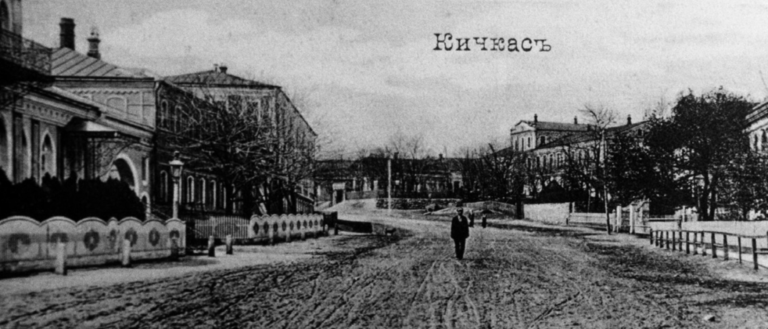
Alcohol Production: In the Chortitza and Bergthal Colonies
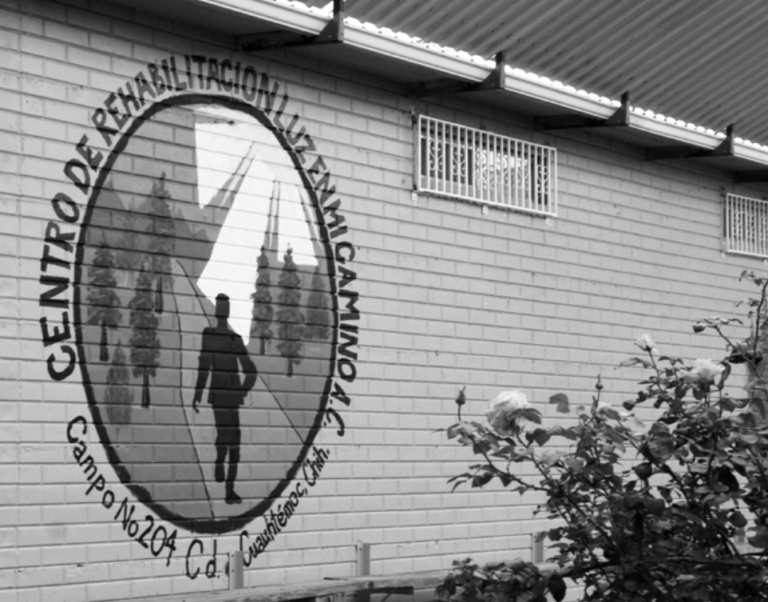
Addiction & Recovery: Mennonites in Mexico & Bolivia
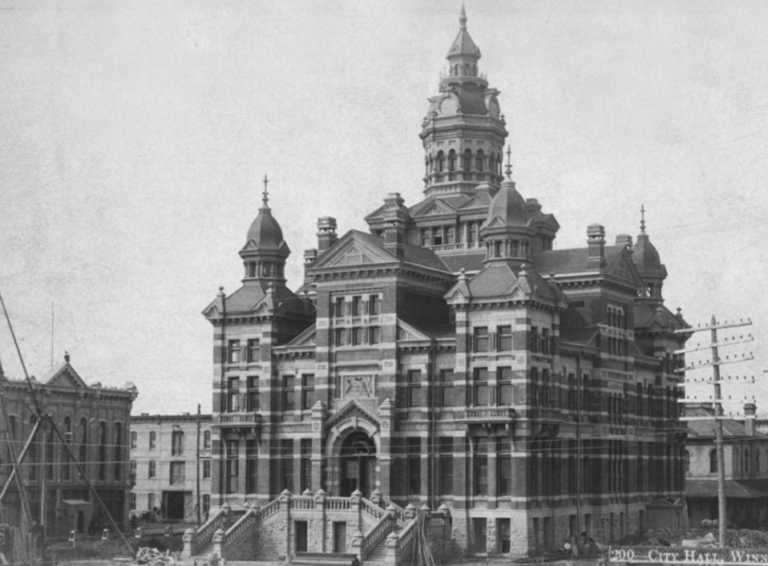
The Political Life of Jacob Penner
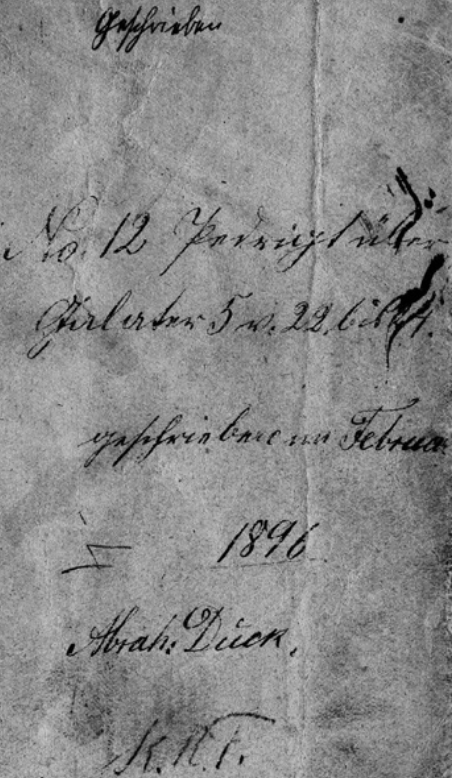
Admonishment & Joy Deferred: Four Sermons of Aeltester Abraham L. Dueck
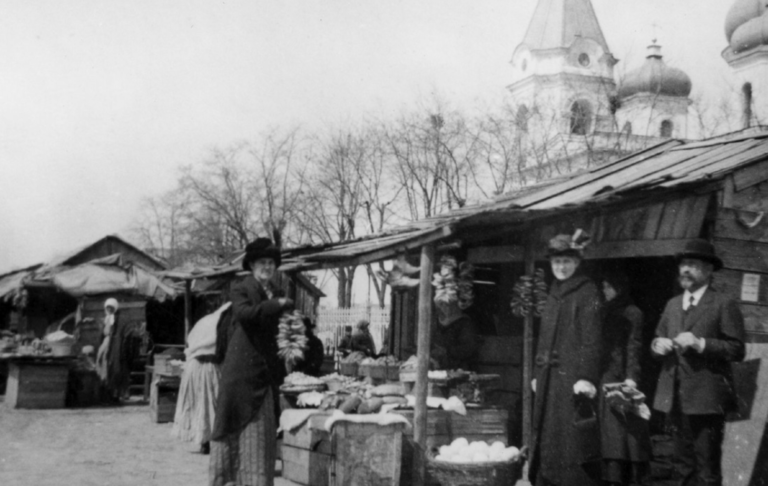
A Mennonite Travelogue: Martin B. Fast in South Russia
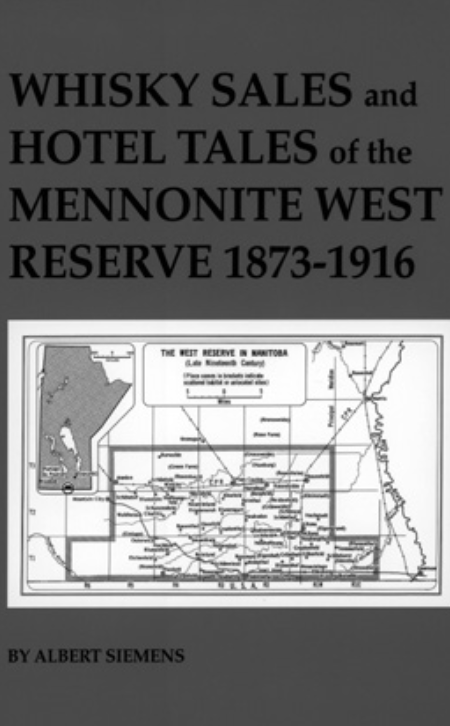
Whisky Sales and Hotel Tales of the Mennonite West Reserve, 1873-1916
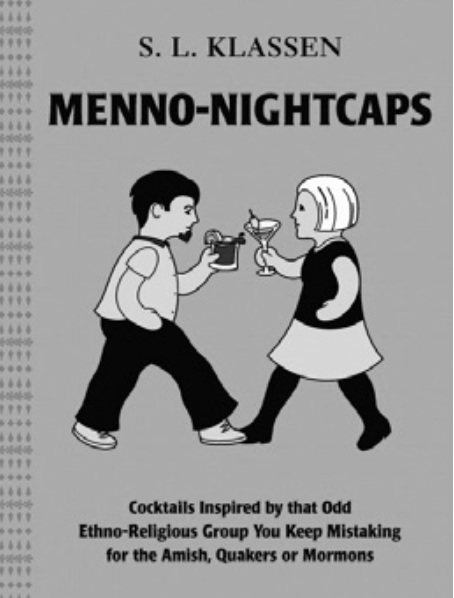
Menno-Nightcaps: Cocktails Inspired by that Odd Ethno-Religious Group You Keep Mistaking for the Amish, Quakers or Mormons
